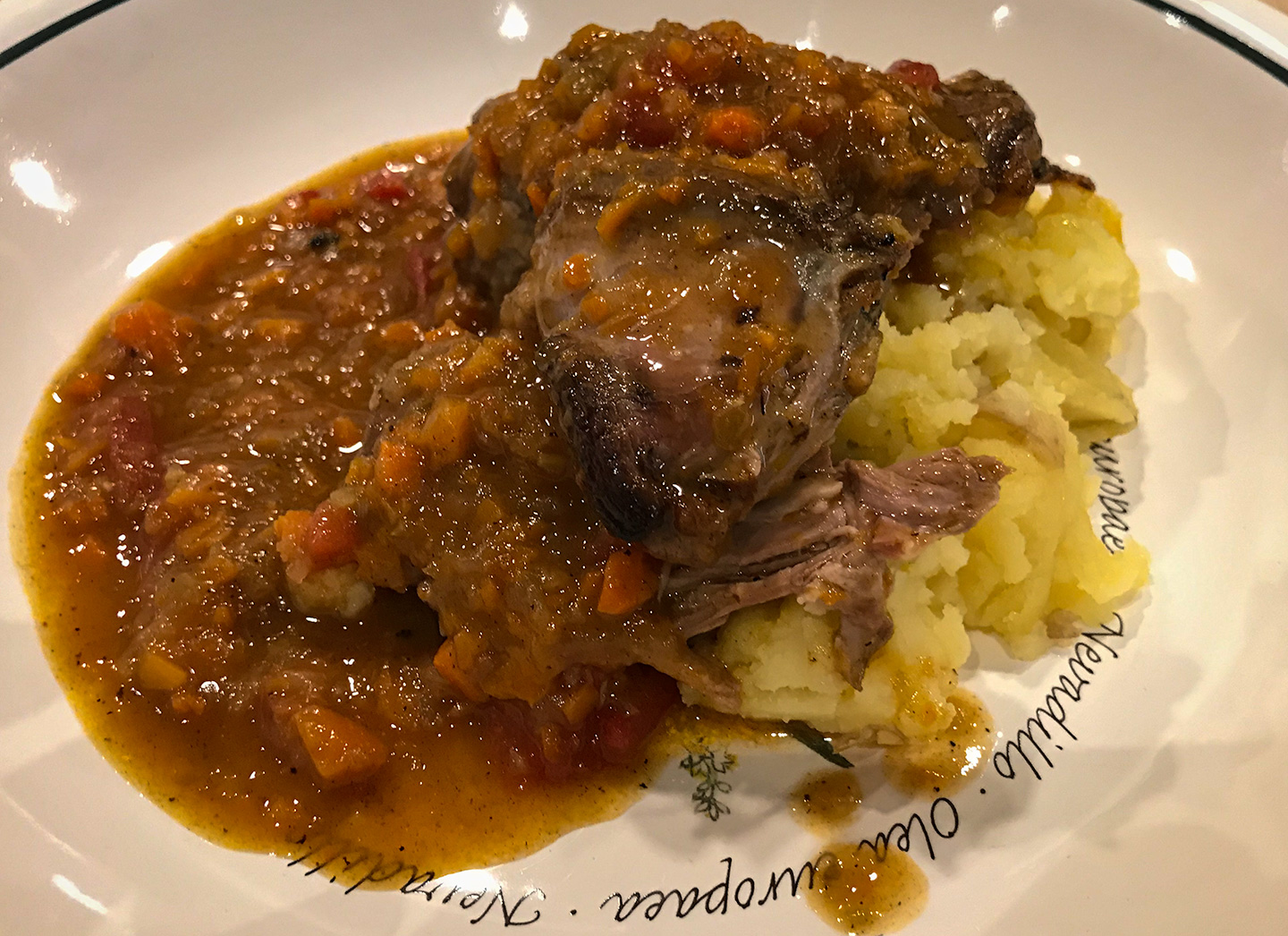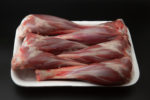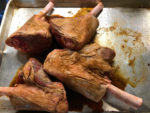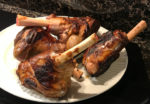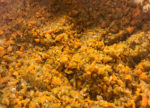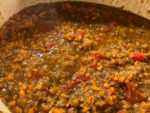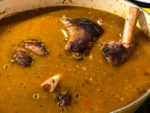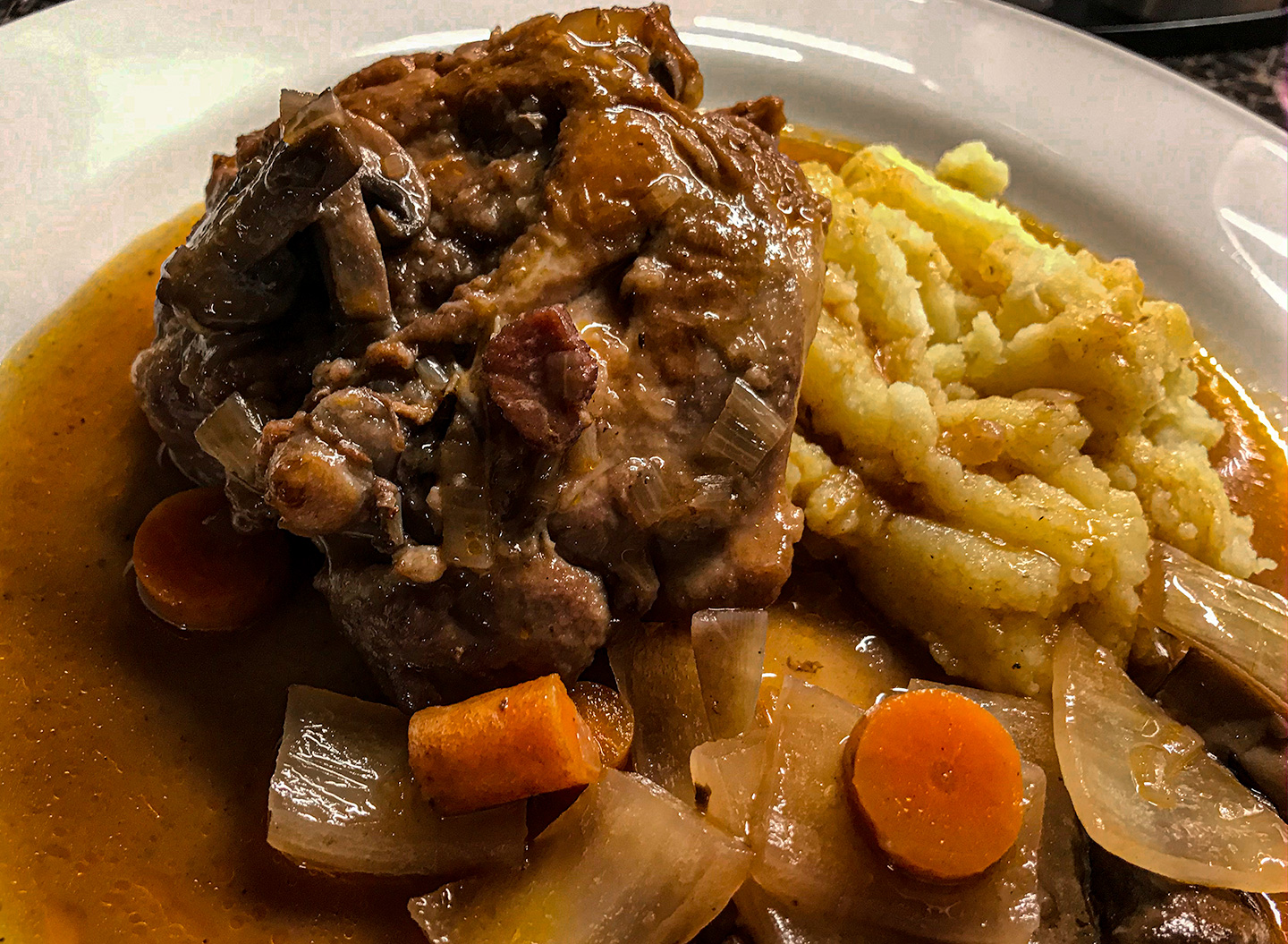
Kitchen Alchemy
The cheapest cuts of meat provide amazing flavors when you apply the correct cooking methods. Whether you’re looking at beef brisket, pork shoulder, or lamb shanks, these cuts have one thing in common — they held together by a considerable amount of connective tissue — which is made of collagen. Cooked quickly at high heat, connective tissue becomes tough and and chewy, yielding underwhelming results.
However, methods like braising and stewing break down the collagen into a gelatin which imparts a tenderness to the meat and creates a silkiness in the cooking liquid.
What are the keys to fall-off-the-bone perfect lamb shanks? Low heat, moisture, and time.
Hind Shank vs. Fore Shank
When you go shopping for lamb shanks, you are likely to find shanks of significantly different sizes. If you consider the fore leg (front leg) and hind leg of a lamb, this makes sense.
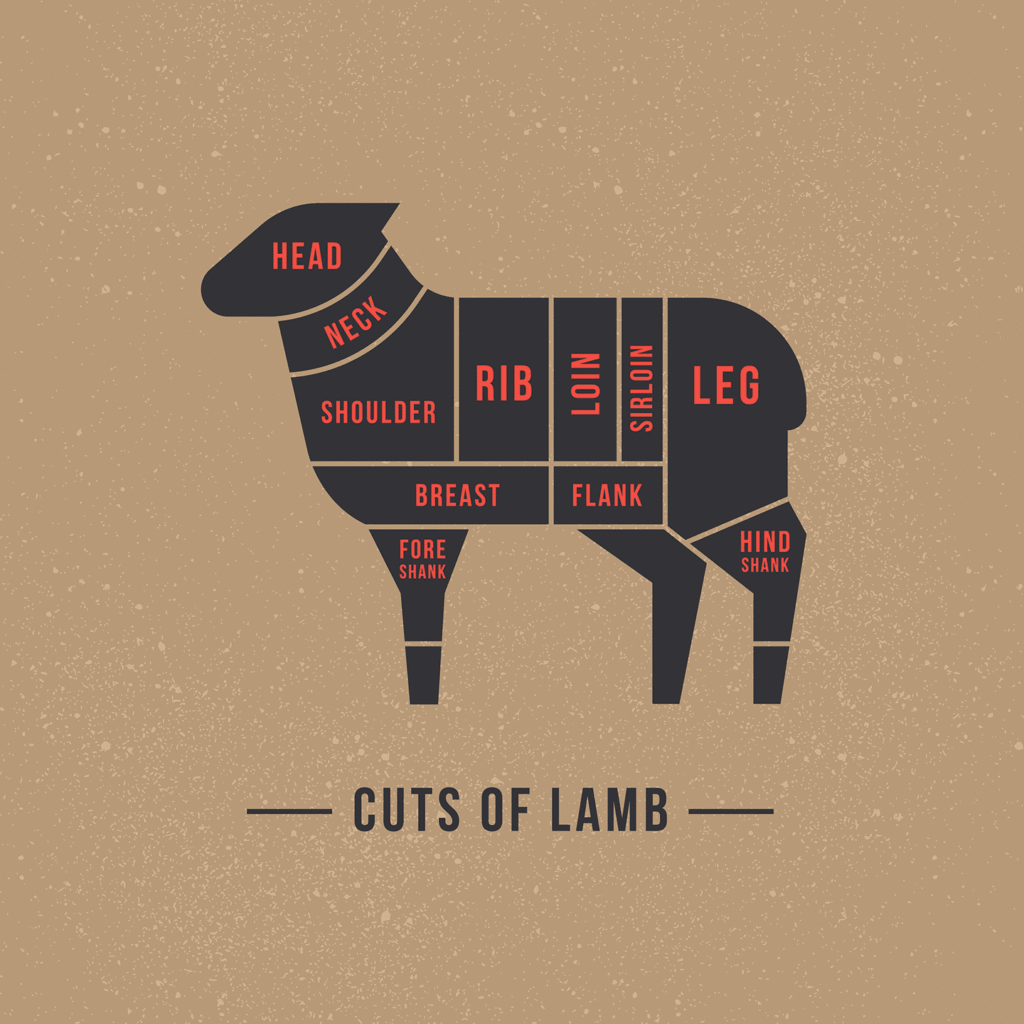
Both will taste wonderful, but the hind shank has more meat. I prefer to use hind shanks, simply because I don’t need as many of them. Someone out there is probably wondering if you can cook a mixture of shanks together. Yes, you can! I’ve done it before and no trouble which the fore shanks being over-cooked.
Layering Flavor
What makes this dish so delicious comes from layering in of different flavors. It starts with a very simple step: seasoning the shanks, and then allowing the meat to rest at room temperature for at least an hour. If you don’t think this step makes a difference, consult Chef Samin Nosrat, who wrote Salt, Fat, Acid, Heat (Food and Wine Magazine, and you’ll find this under Heat, Prepping Meat).
Other sets of flavors come from browning the shanks, the braising liquids you choose, and the aromatic vegetables you include.
Lamb Shanks: Red Wine & Beef Broth? Or White Wine & Chicken Broth
When you begin thinking about what flavors you want in your lamb shank dish, there are many was to go. If you search the internet, you find some recipes that use red wine and beef broth for liquids. Over the last five years, I’ve made lamb shanks many times, and my family prefers the version using white wine and chicken broth. Lamb is much milder in flavor than mutton, and we think red wine and beef broth overwhelm the lamb flavor. However, as with all things in cookery, this is a matter of taste, and you will find which direction best suits you.
Aromatics
What are aromatics? Vegetables and herbs cooked together in some type of fat. They create the base flavor of your cooking liquid.
Mirepoix (France): onion, carrots, and celery, typically cut in a small, precise dice and cooked over low heat until the vegetables are soft, but not browned. Fat used: butter or oil.
Sofrito: in Spain, onion, garlic, peppers, tomatoes. In Portugal, onion is required, but may include tomatoes, garlic, and bay leaves. Fat used: predominantly olive oil.
Soffritto (Italy): you begin with battuto, which is, quite simply, finely chopped aromatic vegetables: onion, celery, and carrots. And unlike French mirepoix, Italians are unconcerned with perfectly regular dice. Most Italian cooks will use a mezzaluna to quickly chop their aromatics into almost a mince. Soffritto varies in length of cooking time, depending on the recipe — often cooked up to 40 minutes, where the vegetables almost disappear into one another. Olive oil is always the fat of choice.
The Holy Trinity: In the twin sisters of Louisiana cooking, the Cajun and Creole cuisines, the holy trinity is a mixture of chopped onion, celery, and green bell peppers. Either butter or oil may be used, depending on the recipe. Butter is more often employed in Creole cooking.
In this recipe, I use an Italian soffritto, which I cook for 20 minutes.
How Much Time is All of This the Going to Take?
You’ll spend about an hour and twenty minutes actively working on this recipe. All the rest of the time is either cooking in the oven or allowing the shanks to rest before serving.
Braised Lamb Shanks
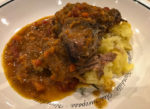
Wonderful, unctuous dish, perfect for fall and winter dining. Preparation requires about 1.5 hours of active work, plus 3.5 hours of cooking in the oven, checking the braise twice.
If you plan to give each person a full shank, then this recipe feeds 4 people. We always cut the meat off the bone before serving, and typically this recipe would easily feed 6 – 7 people this way.
- 4 lamb shanks
- 8 Tbsp worcestershire sauce
- Lawry's salt, or regular salt to taste
- 6 – 8 Tbsp olive oil
- 2 medium onions, minced
- 6 cloves of garlic, minced
- 3 large carrots, minced
- 3 celery ribs, minced
- 1 15 oz can diced tomatoes
- 2 tsp paprika
- 4 bay leaves
- 1/4 tsp ground thyme
- 2 cups dry white wine
- 4 cups chicken broth
- 6 Tbsp flour
Prep and active cooking
- Remove lamb shanks from refrigerator. Season with worcestershire sauce and Lawry's salt (or regular salt) to taste. Leave the seasoned lamb at room temperature for at least an hour. Once you begin browning the shanks, retain the leftover worcestershire sauce — you will add this in later.
-
Wash carrots and celery, peel 6 cloves of garlic. Mince carrots, celery, onion, and garlic. I use a food processor to do this, first cutting carrots, celery and onion into chunks, add the garlic, then pulsing gently until vegetables are minced. If using a food processor, be sure not to overdo this step, or your vegetables will turn to mush.
-
Preheat oven to 400° F.
-
Heat 5 – 6 Tbsp olive oil in large Dutch oven over medium high heat on the stovetop. Brown lamb shanks in batches, until all sides of the shanks are brown. Check your oil between browning batches. Add additional oil if necessary. Set the browned shanks aside. (This will take about 10 minutes per batch of shanks you are browning. I did my 4 shanks in 2 batches, so 20 minutes total for this step).
-
If you need to add additional olive oil to cook the minced vegetables, do it now, and let the oil get hot. Add celery, carrots, onion, and garlic to the Dutch oven and sauté over a medium heat for 20 minutes, being careful not to scorch the vegetables.
-
Season lightly with salt and pepper.
-
Add paprika, and 3 Tbsp. flour, and stir frequently until the mixture becomes dry — 1 to 2 minutes.
-
Stir in white wine, the can of tomatoes, bay leaves, ground thyme, Cook over medium to medium-high heat, simmering briskly for 10 – 15 minutes, until liquid begins to thicken.
-
Gradually add the chicken stock, then add the worcestershire sauce from the seasoning of the lamb, bring to a boil, and then simmer for 10 minutes.
-
Taste the liquid. Adjust seasoning with salt and pepper.
-
Add lamb shanks, pressing them down in the liquid. They should be about 3/4 submerged. Cover the Dutch oven.
Cooking in the Oven
-
Place covered Dutch oven into 400° oven and cook for 30 minutes.
-
After 30 minutes, drop to temperature to 290° and cook for 1.5 hours. Then turn the lamb shanks over in the braising liquid.
-
Return it to the oven and cook for an additional 1.5 hours.
Thickening braising liquid and resting
-
Remove lamb from braise, set aside on a plate and cover to keep warm.
-
Spoon about .5 cup of liquid from the pot and put it into a bowl, add 3 Tbsp. flour to the bowl and stir vigorously with fork until flour and liquid are combined without lumps.
-
Put the Dutch oven with the braising liquid on a burner over medium high heat. Stir in the flour mixture. Bring to a boil, then drop to a simmer, cooking until braising liquid thickens. This will take 10 – 15 minutes. Taste. Add salt and pepper as needed.
-
Taste. Adjust seasoning.
-
Remove from the heat. Return shanks to the pot and allow to rest for at least 30 minutes before serving.
Pictures

